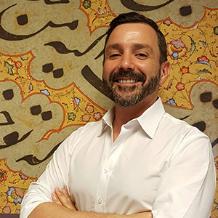Script United. Safavid Iran, Ottoman Turkey, and Nasta‘liq Calligraphy in the Sixteenth Century
Friday 19 January 2018, 6.30PM
Speaker(s): Dr Simon Rettig Freer Sackler Gallery
Since its development in late fourteenth-century Iran, the nasta ‘liq script emerged as the primary style utilised to transcribe almost any text written in Persian, from belletristic copies to historical treatises in a land stretching from India to Anatolia. Traditionally considered as the “visual embodiment of the Persian language, nasta ‘liq was adopted in the Ottoman realm as early as the fifteenth century. Yet, the script encountered tremendous changes that eventually led to an Ottoman style called talik after 1600. The paper investigates the reception and evolution of nasta’liq calligraphy in Turkey from the reign of Bayezid II (r. 1481-1512) to Ahmed I (r.1603-17) in a time when the transformation of the Persian script accompanied the creation of an original Ottoman visual culture. Through the analysis of examples on various mediums and textual sources, Dr Rettig explores how calligraphy became a tool in artistic rivalries as well as political and religious struggles between Ottoman sultans and Safavid shahs.
About the speaker
Dr Simon Rettig is Assistant Curator of the Arts of the Islamic World at the Freer Gallery of Art and Arthur M. Sackler Gallery, Smithsonian Institution in Washington DC. He received his BA from the École du Louvre in Paris and his MA and Doctorate from the Université de Provence, France. Rettig curated the exhibition Nasta‘liq: The Genius of Persian Calligraphy at the Arthur M. Sackler Gallery (2014) and was the co-curator with Massumeh Farhad of The art of the Qur’an: Treasures from the Museum of Turkish and Islamic Arts (2016). His current projects include the exhibition The Prince and the Shah: Royal Portraits from Qajar Iran (opening February 2018) and the preparation of a monograph on the celebrated Freer Khusraw u Shirin manuscript.
Please register for your free ticket.
If you would like more information, please visit the website for the Islamic Art circle lecture series
Location: Bowland Auditorium BS/005

